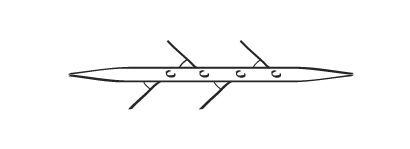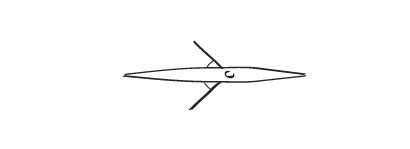Classic Rowing
Classic or sliding seat rowing takes place on inland and coastal waters across the country and is what you see at the Olympics and the Boat Race

Royal Chester A - winners of the Jackson Trophy 2024. (Photo: Ben Rodford Photography.)
You’ll find classic or ‘sliding seat’ rowing on inland rivers, canals, lakes and reservoirs as well as coastal waters.
Classic rowing takes place in boats that have seats with wheels on, which slide up and down in grooves or runners – hence the term “sliding seat”. It is the type of rowing that you’ll see at the Olympic Games and in the Boat Race.
Sliding seat rowing can be with one oar (sweep rowing) or two oars (sculling).
Inland or flat-water boats are typically narrow racing boats (fine boats) designed for rowing on calm waters. For people new to rowing there are stable boats which are wider than the narrow racing boats making it easier for beginners to learn to row.
Coastal sliding seat boats are specially designed for the rougher conditions found on the seas and estuaries, and are wider. Traditional coastal boats have higher sides than fine boats to cope with bigger waves. A new style of self-bailing coastal sculling boats has been introduced recently.
The clubs and associations practising sliding seat coastal rowing are mainly found along the south coast of the UK and the Channel Islands.
Types of sliding seat rowing boats
Inland – Classic Boats
The classic boat, also known as the ‘fine’ boat, is the familiar sliding seat racing shell that you will see rowed or sculled at inland competitions.
In ‘sweep’ boats, each rower has one oar (or blade). In ‘sculling’ boats the sculler uses two oars (or blades). Fine boats have one, two, four or eight seats/rowers. The eights will always have a coxswain (cox) to steer and direct the crew, whereas a four may be coxed or coxless depending on the type of boat used. Pairs are usually coxless. In coxless fours and pairs, one of the crew steers the boat via wires that run from their shoe to the rudder.
Inland – Stable Boats
Stable boats are very similar to fine boats but are wider than a traditional racing boat. This makes it easier for beginners to learn in and for recreational rowers to use for longer tours or recreational rowing on the river without having to worry as much about balance.
Stable boats are usually rowed with two oars (sculling) but can be rowed with one (sweep rowing).
Types of 'sweep' boats
 |
2- (coxless pair) A sweep oar boat for two rowers. It has a rudder so will turn easily when one of the rowers uses a foot steering system. |
 |
2+ (coxed pair) As above but with a cox who steers. |
 |
4- (coxless four) Sweep oar boat for four people with rudder and foot steering system. Bow person usually steers. |
 |
4+ (coxed four) Sweep oar boat for four people plus cox who can be seated in either the bow or the stern of the boat. |
 |
8+ (coxed eight) Sweep oar boat for eight people. All 8s are coxed for safety with a cox steering from the stern. |

- 2- (coxless pair)
A sweep oar boat for two rowers. It has a rudder so will turn easily when one of the rowers uses a foot steering system.

- 2+ (coxed pair)
As above but with a cox who steers.

- 4- (coxless four)
Sweep oar boat for four people with rudder and foot steering system. Bow person usually steers.

- 4+ (coxed four)
Sweep oar boat for four people plus cox who can be seated in either the bow or the stern of the boat.

- 8+ (coxed eight)
Sweep oar boat for eight people. All 8s are coxed for safety with a cox steering from the stern.
Types of 'sculling' boats
 |
1x (single) This is the smallest boat. One rower has two sculls. |
 |
2x (double) Two rowers and four sculls, steering by pressure on blades or footplate. |
 |
4x (quad) Four rowers, eight sculls. One person has a foot steering system. |
 |
4x+ (coxed quad – this type of boat is generally only used by younger juniors) As above but with a cox who steers. |
 |
8x+ (octuple – this type of boat is only used by used by the youngest juniors) Eight rowers and 16 sculls plus a cox sat in the stern. |

- 1x (single)
This is the smallest boat. One rower has two sculls.

- 2x (double)
Two rowers and four sculls, steering by pressure on blades or footplate.

- 4x (quad)
Four rowers, eight sculls. One person has a foot steering system.

- 4x+ (coxed quad – this type of boat is generally only used by younger juniors)
As above but with a cox who steers.

- 8x+ (octuple – this type of boat is only used by used by the youngest juniors)
Eight rowers and 16 sculls plus a cox sat in the stern.
Coastal Boats
Coastal sliding seat boats can mainly be found along the south coast of England with clubs based largely in one of two associations. The Coastal Amateur Rowing Association (covering Kent and Sussex) and the Hants and Dorset Amateur Rowing Association.
The boat design used by the two associations is largely similar to fine boats but is slightly wider and shorter. Some of the older boats even have staggered seats but most are now inline. These boats are suited to rowing and racing close to the shore and on wide estuaries.
Offshore
The new World Rowing-type coastal boats are significantly wider than fine boats and even the coastal boats used by clubs on the south coast. These boats are designed to withstand rougher sea conditions which give this form of rowing a more extreme challenge than that of its river cousins.
Many clubs and rowers based in the South West of England and Channel Islands are adopting the FISA standard sliding seat boats. The boat categories include singles, doubles and quads. The standardisation of the boats has allowed a resurgence in competition on coastal waters around the world. Find out more about coastal sculling here.





